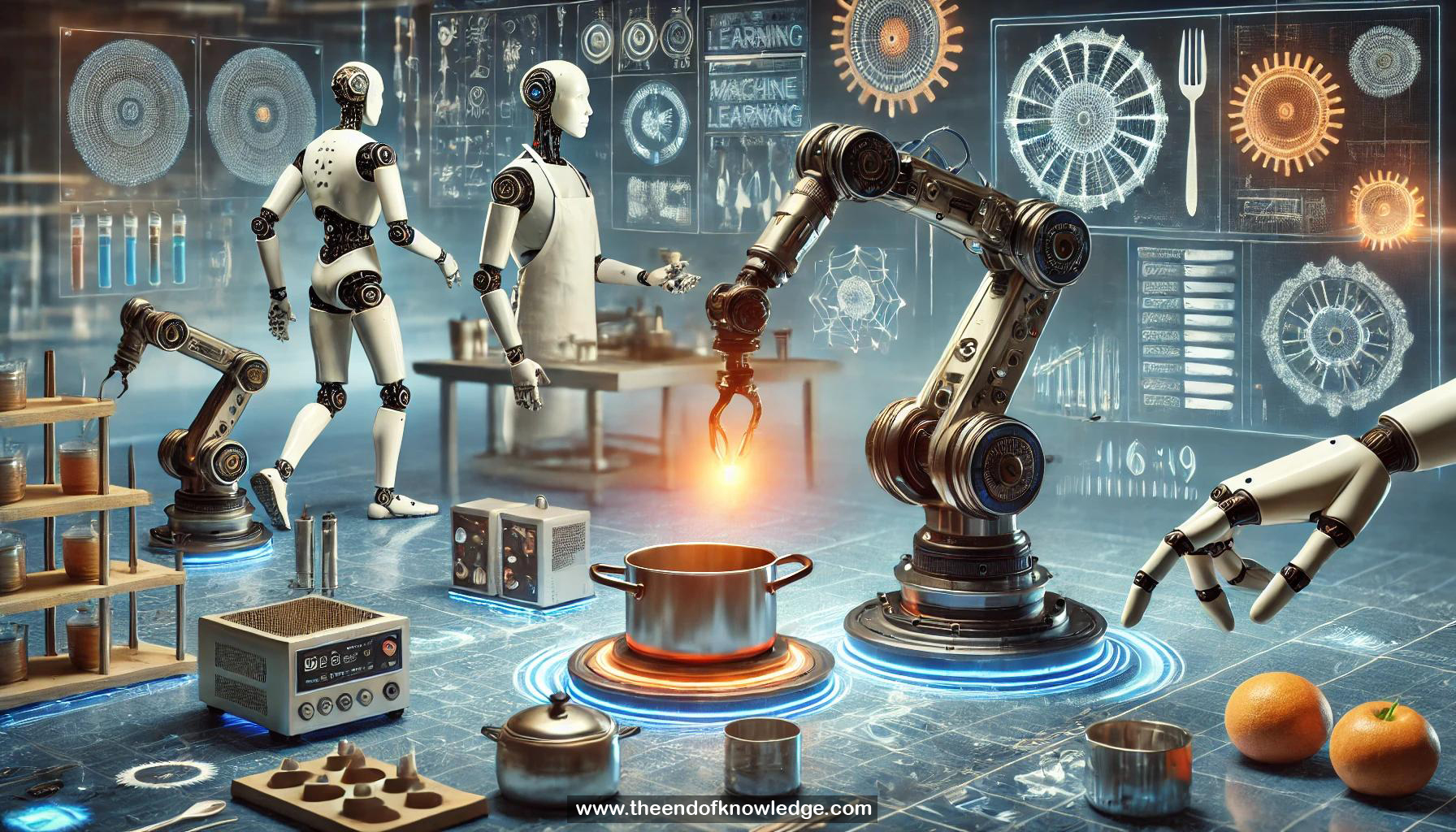Concept Graph & Resume using Claude 3.5 Sonnet | Chat GPT4o | Llama 3:
graph LR
classDef core fill:#f9d4d4, font-weight:bold, font-size:14px
classDef data fill:#d4f9d4, font-weight:bold, font-size:14px
classDef learning fill:#d4d4f9, font-weight:bold, font-size:14px
classDef feedback fill:#f9f9d4, font-weight:bold, font-size:14px
classDef future fill:#f9d4f9, font-weight:bold, font-size:14px
Main[What robots have
taught me about
machine learning] --> C[Core Robotics]
Main --> D[Data Management]
Main --> L[Learning Approaches]
Main --> F[Feedback Systems]
Main --> A[Adaptation Methods]
C --> C1[Neural networks train robots
end-to-end 1]
C --> C2[ML solves complex robot tasks 4]
C --> C3[Transformers control robotic systems 6]
C --> C4[Robots handle household cooking
tasks 7]
C --> C5[ML guides surgical robot
operations 8]
C --> C6[Humanoids learn through shadowing
methods 9]
D --> D1[Robotics faces data limitation
challenges 3]
D --> D2[Data availability impacts machine
skills 10]
D --> D3[Internet data teaches robots
skills 20]
D --> D4[Robotics requires larger data
models 30]
D --> D5[Teleoperation gathers robot
demonstration data 5]
L --> L1[Robots learn from few
experiences 2]
L --> L2[Natural supervision replaces
traditional collection 11]
L --> L3[Vision-language models direct robots 21]
L --> L4[Pre-trained models support tasks 22]
L --> L5[Context improves robot learning 24]
F --> F1[Language feedback improves results 12]
F --> F2[Verbal input updates policies 13]
F --> F3[Real-time fixes during work 14]
F --> F4[Language versus demonstration
effectiveness 15]
F --> F5[Non-experts enhance model
performance 17]
F --> F6[Verbal input reweights data 18]
A --> A1[Visual patterns identify failures 16]
A --> A2[Feedback methods scale datasets 19]
A --> A3[Adapting to unexpected situations 23]
A --> A4[Real environments need strategies 25]
A --> A5[Vision-language models enhance
generalization 26]
A4 --> A6[Natural supervision shapes
future learning 27]
A4 --> A7[Pre-training adapts specific uses 28]
A5 --> A8[Benchmarks poorly evaluate
adaptation 29]
class Main,C,C1,C2,C3,C4,C5,C6 core
class D,D1,D2,D3,D4,D5 data
class L,L1,L2,L3,L4,L5 learning
class F,F1,F2,F3,F4,F5,F6 feedback
class A,A1,A2,A3,A4,A5,A6,A7,A8 future
Resume:
1.- End-to-end neural network training for robotic tasks
2.- Few-shot learning and meta-learning from robot experiences
3.- Data scarcity challenges in robotics versus other ML fields
4.- Role of machine learning in solving complex robotic tasks
5.- Teleoperation interfaces for collecting robot demonstration data
6.- Transformer-based architectures for robotic control
7.- Mobile manipulation for household and cooking tasks
8.- Surgical robot control through machine learning
9.- Humanoid robot training using shadowing-based teleoperation
10.- Data abundance versus scarcity affecting machine capabilities
11.- Natural supervision as alternative to traditional data collection
12.- Language corrections for improving robot performance
13.- High-level policy updates through verbal feedback
14.- Real-time correction of robot mistakes during tasks
15.- Language supervision efficiency versus demonstration data
16.- Model failure identification through visual pattern recognition
17.- Non-expert feedback for improving model robustness
18.- Data reweighting based on verbal descriptions
19.- Scaling feedback approaches to large datasets
20.- Leveraging internet data for robotic learning
21.- Vision-language models for robotic control
22.- Connecting pre-trained models with downstream tasks
23.- Test-time adaptation for unseen scenarios
24.- In-context learning for robot performance improvement
25.- Real-world environment adaptation strategies
26.- Vision language action models improving generalization
27.- Natural supervision's role in future learning systems
28.- Pre-training modifications for downstream task compatibility
29.- Benchmark limitations in evaluating adaptive algorithms
30.- Scaling up data and models in robotics
Knowledge Vault built byDavid Vivancos 2024
 >
>